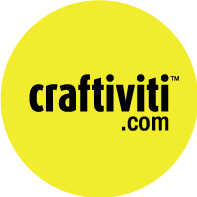Making Cold Process Soap is one big step up from Melt & Pour.
I have always been a M&P fan. I like the fact that M&P soaps have no curing and waiting time. I like how creative it can get with M&P and how vibrant the end colors look. I also like how convenient and easy it is to make soap with Melt & Pour Soap Bases.
But most importantly…
I like the fact that I don’t have to deal with Sodium Hydroxide (NaOH) because M&P Soap bases are already pre-prepared for instant use.
But the curiosity of working with lye kept bugging me. Every day I meet soap makers who had graduated from M&P and were still alive after moving onto lye so I thought to myself ‘How bad can it be?’

I read all the notes and did plenty of research. I also spent hours watching different YouTube videos on the proper way to mix lye (every instructor has a different trick to it).
It took months of research before I mustered up enough courage to add Sodium Hydroxide to water (NEVER THE OTHER WAY AROUND).
But even with all my research, my very first experience mixing lye was very unnerving for me.
If you are reading this and expecting something bad to happen at the end SPOILER ALERT – nothing horrid happened but here are the more important DON’TS coming from a paranoid beginner.
DON’T forget your gloves and wear a long sleeves to protect your arms from any splashes. I remembered the first two but didn’t think safety glasses and a facial mask were necessary. Trust me it is. Because when the lye starts fuming, the vapors can sting which brings me to the next DON’T.
DON’T mix lye indoors. Even if your kitchen is well ventilated like mine is, the fumes did get to me and I started worrying if my ceiling would start to corrode. I ended up moving my lye outside to the balcony which was a very dangerous thing to do especially when the lye was so hot. It is best to begin the mixing outside and to leave the whole darn thing outside until it cools. However, remember to warn your entire household that you are mixing lye so they know not to touch anything that looks like water until the coast is clear.
DON’T use any other glass cup and especially not a plastic mixing cup to mix your lye. Always use a high grade science beaker or a stainless steel mixing bowl and a glass or stainless steel stirrer. NaOH in water can get very hot so you don’t want it to melt your cup or break it (my digital thermometer clocked 84.3 Celsius!) .
DON’T let any pets and kids hang around no matter how cute they are. EVERY instructor in EVERY video I watched mentioned this but I ignored this golden advise when it came to my 2 cats. I figured I would just shoo them if they got in my way. But when my beaker got really hot, I started freaking out. What if the cats tripped me and I fell onto the beaker? What if they jump on the counter and dipped their paw into it?! What if they knock over the camera that was hanging over the beaker and the beaker explodes and everything MELTS! Not worth the anxiety. So just keep all pets and kids away.

Here’s my beaker safely out in my balcony. You can’t see the fumes but it’s THERE. By this time, I had locked my cats in my bedroom and I also did a quick prayer that no bird or falling leaf would come near that beaker.
But all in all, making a lye solution was not as dangerous as I thought it would be. Aside from the fumes which caught me by surprise, everything was actually quite easy, which brings me to my last and most important advise…
DON’T try this on your own for the first time. It is always best to make your 1st batch with an experienced CP soap maker or learn it from a professional instructor at a workshop before attempting to work with Lye. Looking back, if I had someone watching over me instead of doing it on my own, I wouldn’t have gotten so paranoid.
Check out my next article on how to make a basic CP soap with this lye solution.






 Here’s my beaker safely out in my balcony. You can’t see the fumes but it’s THERE. By this time, I had locked my cats in my bedroom and I also did a quick prayer that no bird or falling leaf would come near that beaker.
Here’s my beaker safely out in my balcony. You can’t see the fumes but it’s THERE. By this time, I had locked my cats in my bedroom and I also did a quick prayer that no bird or falling leaf would come near that beaker.